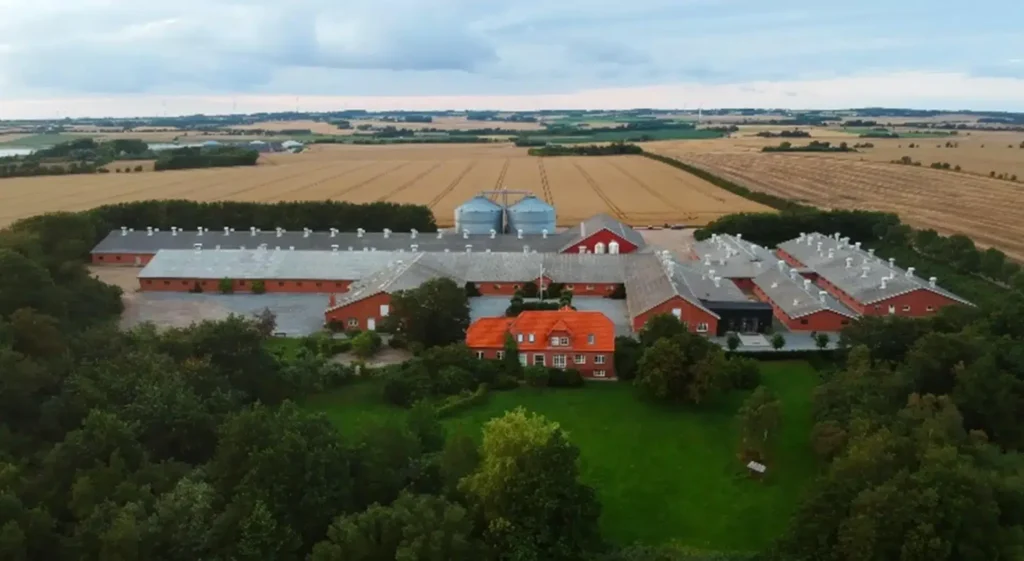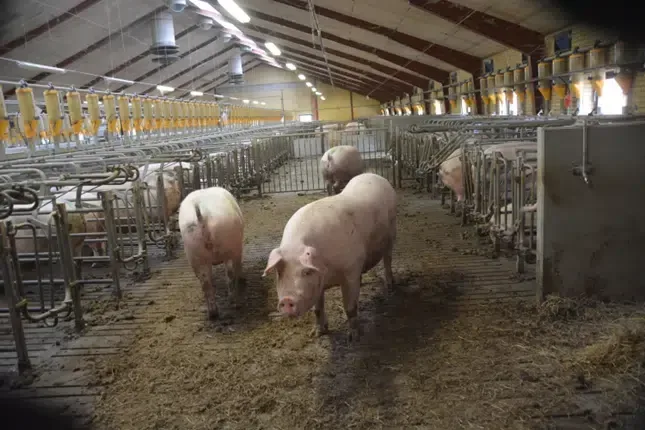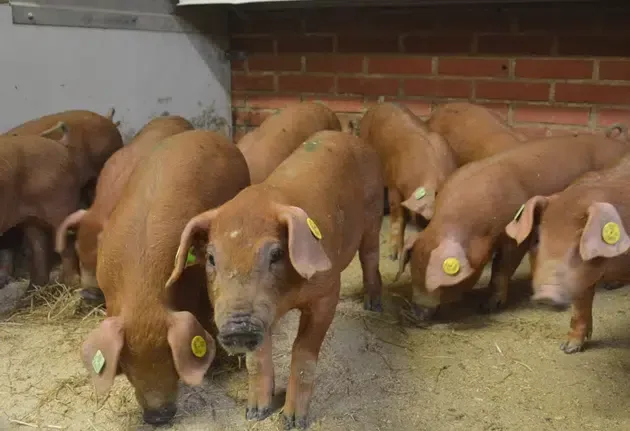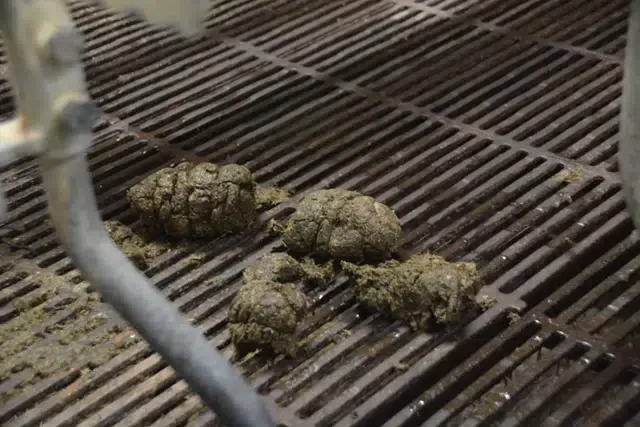Danish Pig farmer Allan Gade Nielsen used a new feeding strategy to achieve greater stability in his breeding herd. To his surprise, the fermented proteins also improved bone strength.
Located on the island of Mors in Denmark, surrounded by water and windmills, Molsgaard Pig Breeding is a farm jointly run by Allan Gade Nielsen, his father, and his brother.
Since 1987, they have operated a breeding centre for the genetics company DanBred. Their herd currently comprises 800 Landrace sows and 300 Duroc sows. The pigs are exported as breeding stock to various parts of the world.

Challenged by the lack of appetite and PRRS
According to Allan, purebred sows are more challenging to feed than crossbred sows. The need for increased feed intake was the primary reason the father and sons sought a new feeding solution. However, before implementing a new strategy, the herd needed to be culled for PRRS for the second time.

Choose a holistic feeding concept
After a visit from European Protein, the Gade family decided to try the fermented EP products and the “First 175 Days” feeding concept.
The concept involved feeding the sows for better health during gestation and lactation, followed by feeding fermented feed for piglets up to 15 kilograms. The new feeding concept, “First 175 Days,” was implemented in collaboration with the Porcus veterinarians and a mineral supplier, Nutrimin.
The solution included feeding the soy protein EP200 and the rapeseed protein EP100i for pig feed, while the sows received EP199, containing fermented rapeseed meal and seaweed.
Had to reduce the protein level by 15 per cent
However, the new proteins were not an immediate success. The breeder had to make several adjustments to the formulations along the way:
“Purebred sows are somewhat different from crossbred sows. With EP protein, the sows utilize the feed better, and that’s why we had to reduce the protein content by 15 per cent. Otherwise, the protein level in the milk would be too high, leading to protein diarrhoea in the piglets. But once we got it right, it has worked well ever since”, says the farmer about the initial experience with fermented protein.

“It’s expensive to repair instead of preventing”
The sows now maintain better body condition – a challenge that has caused significant problems in the past, especially with Landrace sows that ate too little, according to Allan:
“The sows are more active and stand up when fed. As soon as we activate the feeders, they are up and about. Now it is us who set the limit for what the sows should eat, and this has been one of our biggest challenges with the purebred sows.”
Allan is also convinced that the sow feed has contributed to better milk production and more sows coming into heat on time:
“Approximately 98 per cent of our sows come into heat on schedule, and we are very satisfied with that. We don’t have to repair body condition at the beginning as we did before, where we had to push them hard after weaning and where we actually lost some due to leg issues. It’s expensive to repair instead of preventing.”
Allan also mentions that EP199 has improved the milking ability of the sows:
“Sows start milking right after farrowing, and they wean more piglets. We don’t have those small ‘mice,’ and the variation in size has become smaller.”

Surprising side-effect on bone health
When Allan started using EP products, his motivation was to increase feed intake, improve milk yield, and achieve a higher weaning per weaning.
However, one thing surprised the farmer.
While he can’t make a direct comparison with his previous herd, he can see that EP protein has improved bone health:
“Bones are incredibly important to all our customers, and they are one of the things people notice most. It is also one of the easiest things to assess when the animals arrive. Since we started with EP products, we have seen a significant improvement in the quality of the bones in our animals and their overall health.”
Piglets eat more with home-mixed piglet feed
Previously, Allan bought his piglet feed from a compound feeder, but he now mixes his own pig feed, which is also used in the farrowing pen.
From day 10, piglets are fed EP200 and EP100i, and in the last week before weaning, they are fed approximately 1.5 kilograms of feed per farrowing pen.
Like the sows, Allan has seen an increased appetite:
“Since we started with EP200 and EP100i, they eat it all, and the animals don’t stop eating feed when we wean them. They go straight to the feed.”
Requires no investment – but you get all the benefits on top
When the pig farmer balances the books, the investment in fermented protein breaks even due to saved feed costs.
However, significant advantages, such as improved health, increased milk production, and the major benefit of selling more breeding animals come on top:
“When everything is added up, it doesn’t require any investment, so it more or less breaks even – but you still get all the benefits of the product on top.”
Benefits of Fermented Protein at Molsgaard Pig Breeding:
- Increased appetite in sows and piglets
- Enhanced milking and nursing abilities
- 15 per cent reduction of protein in sow feed
- Sows maintain body condition and come into heat on schedule
- Improved bone quality, leading to more pigs being sold for breeding rather than for slaughter
Use of protein:
Young females: 4% EP199
Gestation feed: 4% EP199
Lactation feed: 9% EP199
Weaners pigs 1 (7-10 kg): 8% EP100i and 8% EP200 – also used in the farrowing section.
Growing pigs 2: 8% EP100i
Growing pigs 3: 8% EP100i
Need greater milk yield and stability in the sow herd?
Fill in your data below, and we will get in touch.

